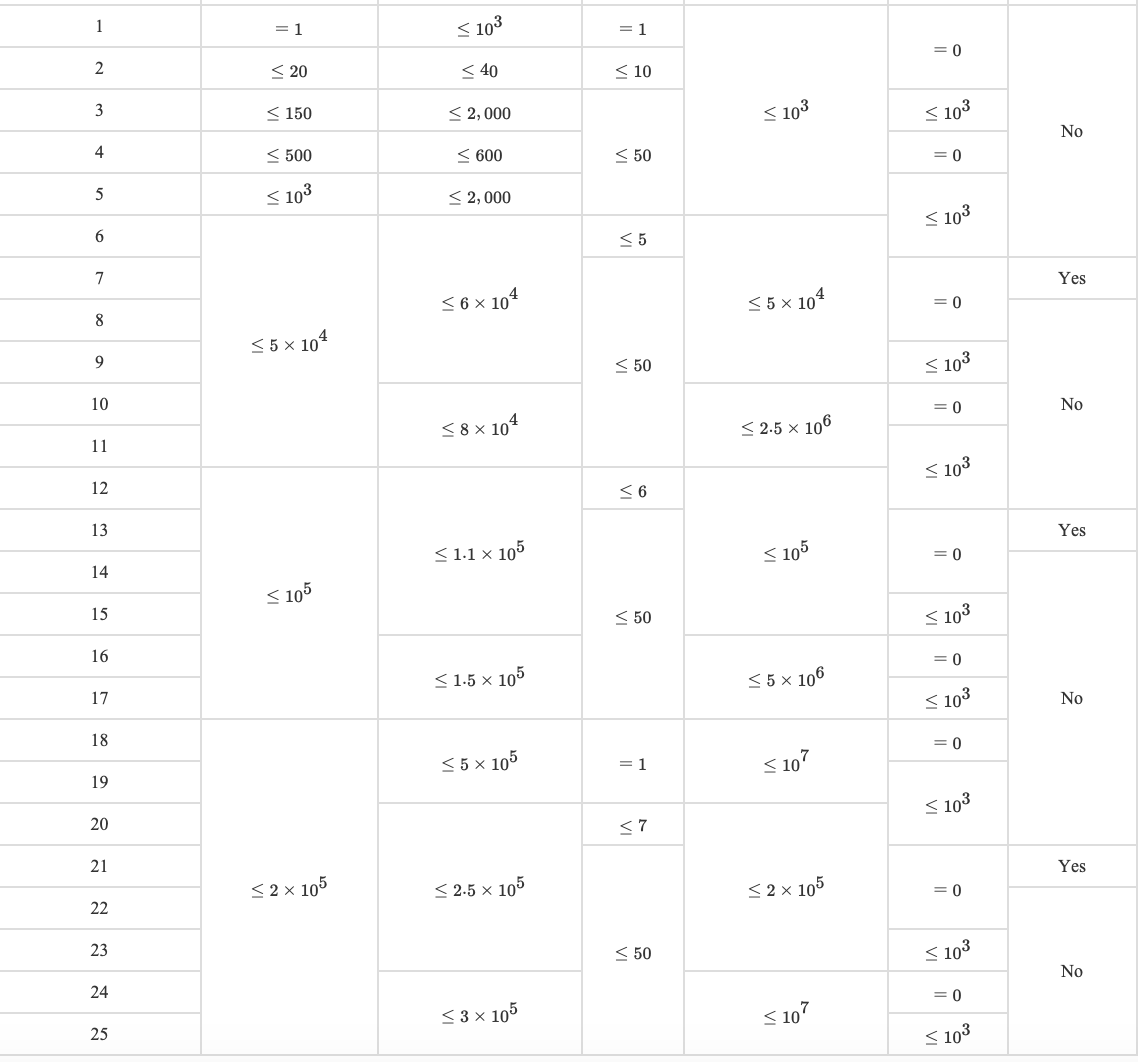NOI '17 P2 - Queue
View as PDFWarning: The original problem has a 2GB memory limit, but DMOJ only supports a 1GB memory limit. Solutions exist using less than 1GB of memory.
There are
There are
1 i jwhere2 iwhere3 s kwhere
The definition of
For a given queue, the
Input Specification
The first line consists of two positive integers
In the second line, there are
In the following
The input file might be large.
Output Specification
For each operation 3 s k, output a line with an integer denoting the output.
Sample Input 1
5 9
3 1 3 5 3
3 333135 2
3 333135 1
1 1 3
1 2 5
1 3 2
1 5 4
3 333135 2
3 333135 1
3 333135 3Sample Output 1
0
81
1
81
0Explanation for Sample 1
For the first query, since there is only one worm in each queue, no worms have a 2-string, so the output is simply
For the second query, each worm's 1-string is the string formed by the worm's own length, so we see the 1-strings are
Sample Input 2
2 10
6 6
3 666666 1
1 1 2
3 666666 2
3 666666 4
3 666666666666666666666666666666 1
2 1
1 2 1
3 666666 2
3 666666 4
3 666666666666666666666666666666 1Sample Output 2
64
1
0
75497471
1
0
75497471Explanation for Sample 2
For the 4th and the 7th query, since 6s,
Additional Samples
Constraints
Let
Let 2 i, then

The columns, from left to right, are:
- Test case
- Whether all lengths and all query strings
1s.
Comments